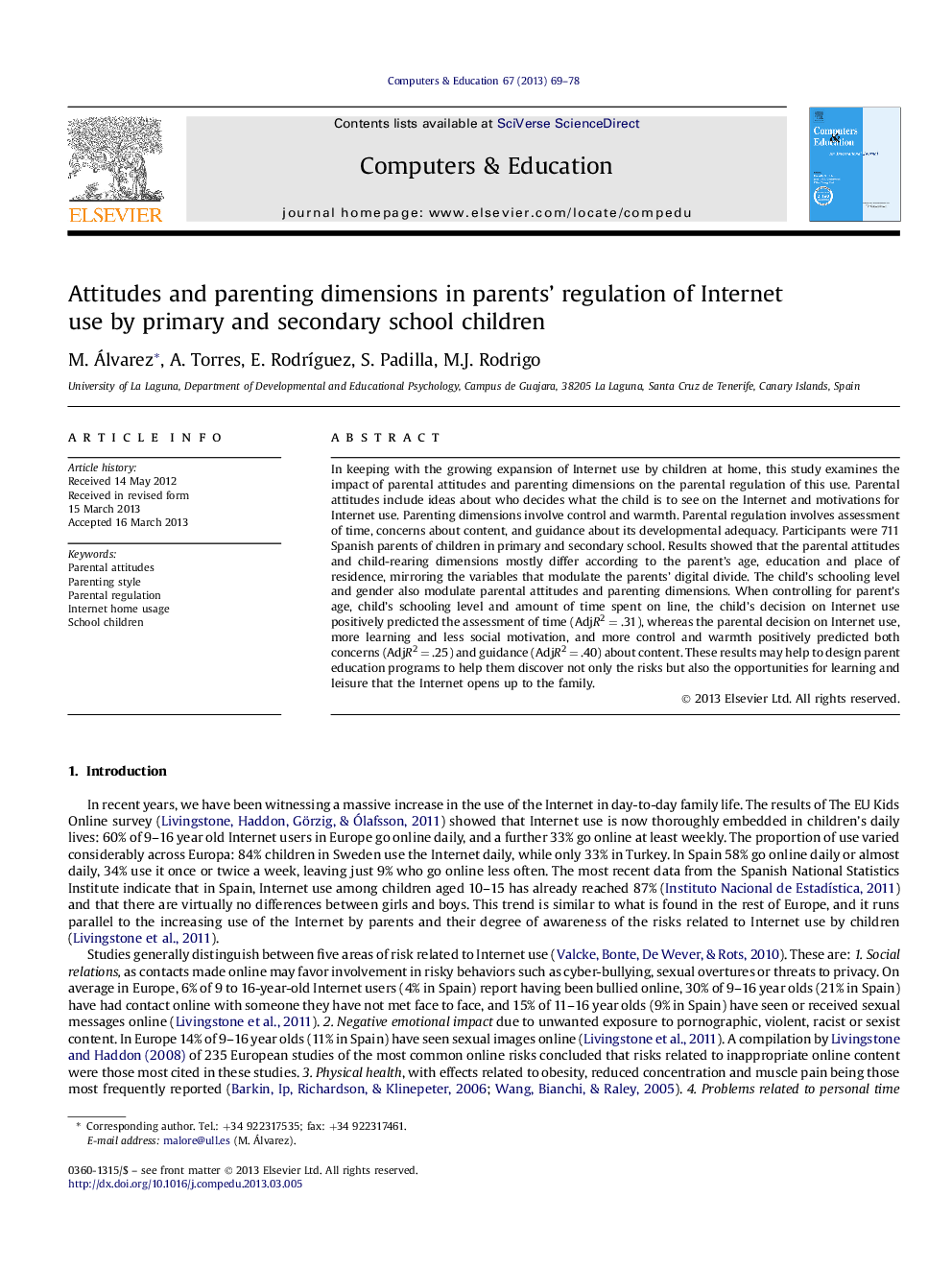| Article ID | Journal | Published Year | Pages | File Type |
|---|---|---|---|---|
| 6835536 | Computers & Education | 2013 | 10 Pages |
Abstract
In keeping with the growing expansion of Internet use by children at home, this study examines the impact of parental attitudes and parenting dimensions on the parental regulation of this use. Parental attitudes include ideas about who decides what the child is to see on the Internet and motivations for Internet use. Parenting dimensions involve control and warmth. Parental regulation involves assessment of time, concerns about content, and guidance about its developmental adequacy. Participants were 711 Spanish parents of children in primary and secondary school. Results showed that the parental attitudes and child-rearing dimensions mostly differ according to the parent's age, education and place of residence, mirroring the variables that modulate the parents' digital divide. The child's schooling level and gender also modulate parental attitudes and parenting dimensions. When controlling for parent's age, child's schooling level and amount of time spent on line, the child's decision on Internet use positively predicted the assessment of time (AdjR2Â =Â .31), whereas the parental decision on Internet use, more learning and less social motivation, and more control and warmth positively predicted both concerns (AdjR2Â =Â .25) and guidance (AdjR2Â =Â .40) about content. These results may help to design parent education programs to help them discover not only the risks but also the opportunities for learning and leisure that the Internet opens up to the family.
Related Topics
Social Sciences and Humanities
Social Sciences
Education
Authors
M. Álvarez, A. Torres, E. RodrÃguez, S. Padilla, M.J. Rodrigo,
